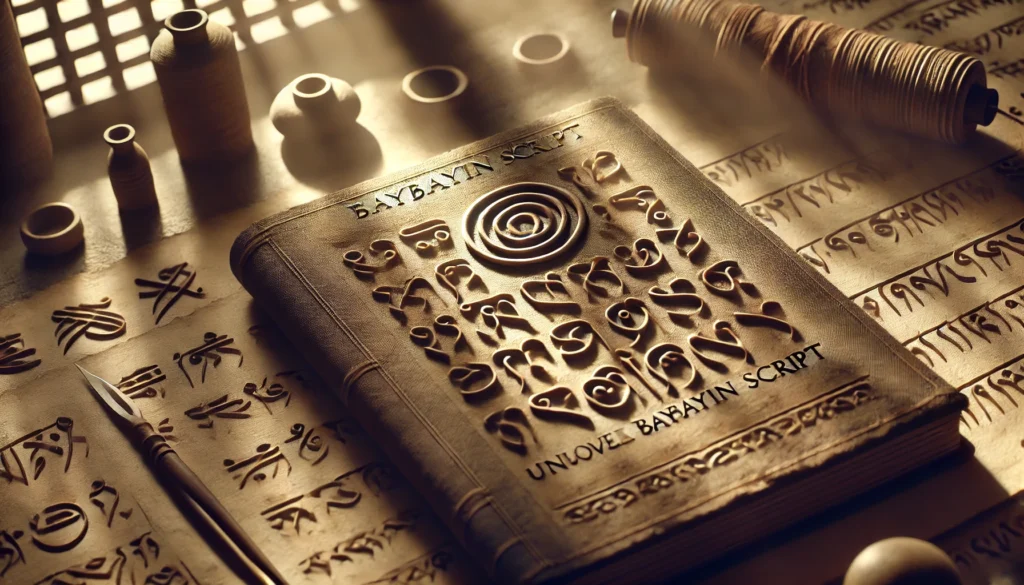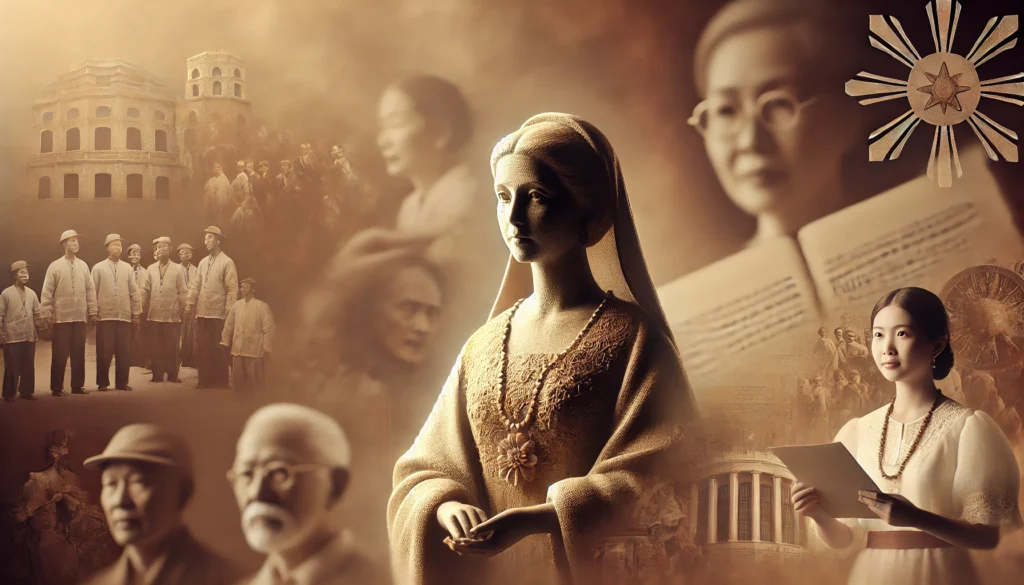Baybayin, also known as Alibata, is an ancient Philippine script that has captured the fascination of historians, linguists, and cultural enthusiasts alike. This pre-colonial writing system, deeply rooted in the archipelago’s rich history, offers a window into the sophisticated literary traditions of early Filipino societies. As we delve into the intricacies of Baybayin, we uncover not just a set of characters, but a cultural heritage that continues to influence Philippine identity today.
Historical Origins and Development
The exact origins of Baybayin remain a subject of scholarly debate, but most historians agree on its development during the pre-colonial period of Philippine history.
Early Development
- Baybayin is believed to have evolved from Brahmic scripts of India, which spread across Southeast Asia.
- Linguistic evidence suggests its emergence around the 13th century, though some theories propose earlier dates.
- The script likely developed in the Tagalog regions before spreading to other parts of the Philippines.
Spread and Variations
Baybayin was not uniform across the Philippines. Different regions adapted the script, leading to several variations:
- Tagalog Baybayin: The most widely known form, used in the Tagalog regions.
- Kapampangan Kulitan: A variation used in the Pampanga region.
- Hanunó’o, Buhid, and Tagbanwa scripts: Used by indigenous groups in Mindoro and Palawan.
These variations reflect the linguistic and cultural diversity of the pre-colonial Philippines, showcasing how the script adapted to different languages and communities.
Structure and Characteristics of Baybayin
Baybayin is an abugida writing system, meaning each character represents a consonant-vowel combination. Understanding its structure is key to appreciating its elegance and efficiency.
Basic Characters
The Baybayin script consists of:
- 3 vowels (A, E/I, O/U)
- 14 consonants
Each consonant character inherently includes the vowel ‘A’. To change the vowel sound, diacritical marks called kudlit are added above or below the character.
Writing System
- Direction: Baybayin is written from left to right.
- Vowel modification: A kudlit above a character changes the vowel to E/I, while a kudlit below changes it to O/U.
- Consonant endings: Originally, Baybayin had no way to write standalone consonants. A virama was later introduced by Spanish friars to address this limitation.
Table: Baybayin Characters and Their Romanized Equivalents
| Baybayin Character | Romanized Equivalent |
|---|---|
| ᜀ | A |
| ᜁ | E/I |
| ᜂ | O/U |
| ᜃ | Ka |
| ᜄ | Ga |
| ᜅ | Nga |
| ᜆ | Ta |
| ᜇ | Da |
| ᜈ | Na |
| ᜉ | Pa |
| ᜊ | Ba |
| ᜋ | Ma |
| ᜌ | Ya |
| ᜎ | La |
| ᜏ | Wa |
| ᜐ | Sa |
| ᜑ | Ha |
Cultural Significance and Usage
Baybayin was more than just a writing system; it was an integral part of pre-colonial Filipino culture and daily life.
Practical Applications
- Administrative records: Used for keeping accounts and writing letters.
- Trade: Facilitated commerce with written agreements and records.
- Personal communication: Employed in love letters and personal correspondence.
- Religious practices: Incorporated in spiritual texts and rituals.
Cultural Impact
The script played a crucial role in preserving and transmitting indigenous knowledge, traditions, and literature. It was a medium through which early Filipinos expressed their creativity, spirituality, and social norms.
Decline and Near Extinction
The arrival of Spanish colonizers in the 16th century marked the beginning of Baybayin’s decline.
Factors Contributing to Decline
- Introduction of the Latin alphabet: Spanish friars promoted the use of the Roman script for ease of communication and religious conversion.
- Suppression of indigenous practices: Colonial policies often discouraged or prohibited native cultural expressions, including writing systems.
- Shift in educational practices: Spanish-run schools taught the Latin alphabet, gradually phasing out Baybayin instruction.
By the 18th century, Baybayin had largely fallen out of use in most parts of the Philippines, surviving only in isolated communities and among scholars.
Revival and Modern Interest
In recent decades, there has been a resurgence of interest in Baybayin, driven by cultural pride and a desire to reconnect with pre-colonial heritage.
Revival Efforts
- Academic research: Scholars have conducted extensive studies on Baybayin, uncovering new information about its history and usage.
- Educational initiatives: Some schools have incorporated Baybayin into their curriculum, teaching it alongside the modern Filipino alphabet.
- Artistic expressions: Artists and designers have incorporated Baybayin into contemporary works, from tattoos to digital fonts.
Legislative Support
In 2018, the Philippine House of Representatives approved the National Writing System Act, which aims to promote and preserve Baybayin. This legislation reflects growing governmental support for the script’s revival.
Baybayin in the Digital Age
The digital revolution has opened new avenues for Baybayin’s preservation and promotion.
Digital Preservation
- Unicode integration: Baybayin characters have been included in the Unicode Standard, ensuring their compatibility across digital platforms.
- Font development: Various Baybayin fonts have been created, allowing for easy digital typing and display.
Online Communities
Social media and online forums have fostered communities of Baybayin enthusiasts who share knowledge, artwork, and resources related to the script.
Challenges in Baybayin Revival
While interest in Baybayin has grown, its revival faces several challenges:
- Standardization: Different interpretations of characters and writing styles can lead to inconsistencies.
- Modern applicability: Adapting Baybayin to express sounds in modern Filipino languages that didn’t exist in pre-colonial times.
- Widespread adoption: Encouraging broader use beyond academic and artistic circles.
The Future of Baybayin
The future of Baybayin looks promising, with increasing recognition of its cultural importance.
Potential Developments
- Integration into national identity: Baybayin could become a more prominent symbol of Filipino heritage.
- Educational expansion: More comprehensive inclusion in school curricula nationwide.
- Technological advancements: Development of AI-powered translation tools and improved digital integration.
Baybayin’s Global Reach
Baybayin’s influence extends beyond the Philippines, resonating with the global Filipino diaspora and international scholars of Southeast Asian cultures.
International Recognition
- Academic interest: Universities worldwide offer courses on Philippine scripts, including Baybayin.
- Cultural exhibitions: Museums and cultural centers internationally have featured Baybayin in exhibitions on Southeast Asian writing systems.
Diaspora Connections
For many overseas Filipinos, Baybayin serves as a tangible link to their ancestral heritage, fostering a sense of cultural identity and pride.
Conclusion
Baybayin stands as a testament to the rich cultural heritage of the Philippines. From its ancient origins to its modern revival, this script encapsulates centuries of Filipino history, creativity, and resilience. As we continue to unravel its mysteries and promote its usage, Baybayin not only preserves a piece of the past but also shapes the cultural landscape of the future. Its journey from near extinction to renewed appreciation demonstrates the enduring power of indigenous knowledge systems in the face of historical challenges.
The resurgence of Baybayin in contemporary Philippine society reflects a broader trend of reclaiming and celebrating pre-colonial identities. As the Philippines continues to navigate its place in the global community, Baybayin serves as a unique cultural ambassador, bridging the ancient and the modern, the local and the global.
For linguists, historians, and cultural enthusiasts, Baybayin offers a fascinating field of study, rich with opportunities for further research and discovery. For the Filipino people, it represents a tangible connection to their ancestors and a source of national pride. As efforts to revive and promote Baybayin continue, it is poised to play an increasingly significant role in shaping Philippine cultural identity in the 21st century and beyond.
Disclaimer: While every effort has been made to ensure the accuracy of the information presented in this blog post, our understanding of historical writing systems is continually evolving. Readers are encouraged to report any inaccuracies or new findings to ensure this content remains up-to-date and reliable. This article reflects information available up to 2023.




